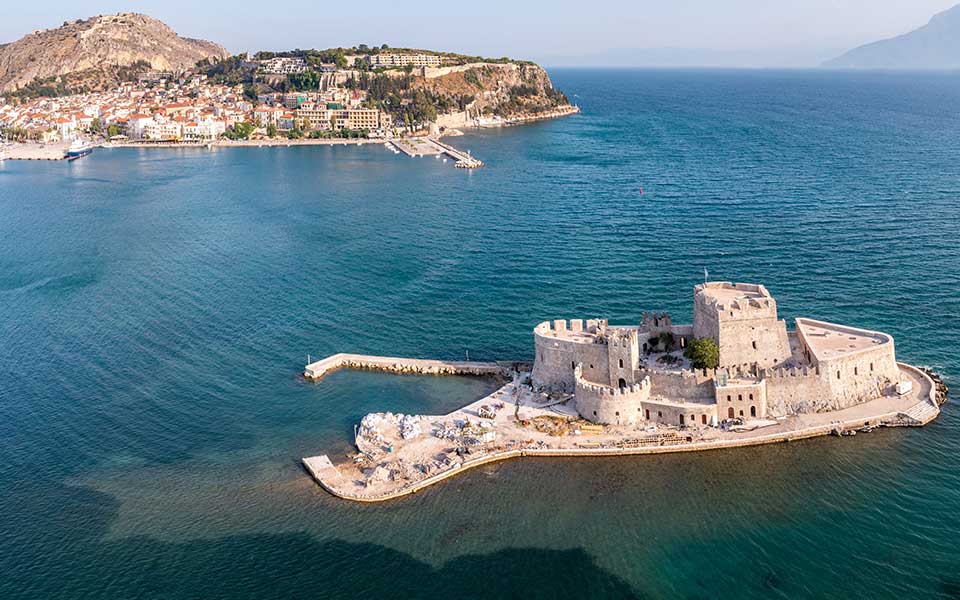Dedicated to which god?
Located on the tiny islet of Palatia, connected to the Old Town (Hora) of Naxos by a narrow causeway, and commanding spectacular views of the surrounding seascape, archaeologists agree that the colossal marble doorway is the remnants of a gigantic unfinished temple, dated to the last quarter of the 6th century BC. Crafted from local white marble quarried from Apollonas, at the north end of the island, the towering edifice measures 6m in height and 3.5m in width, with a thickness of 1.3m. Consisting of four separate lintels, each weighing approximately 20 tons, the doorway was intended to serve as the main entrance to the imposing temple.
Archaeologists also agree that the temple was started by the tyrant Lygdamis of Naxos, who ruled the island from c. 540 to 506 BC, but his ambitious building project was never finished, leaving only part of its monumental doorway and the foundations of the inner cella. If completed, the temple would have been 59m long and 28m wide, with a peristyle of 6×12 columns, rivalling in size and splendour the biggest temples in the ancient Greek world.
 
What they can’t agree on, however, is whether the temple was intended to be a place of worship for Apollo, god of music, poetry, and the Sun, or Dionysus, god of wine and revelry. Those arguing in favor of Apollo note the orientation of the Portara, which faces in the direction of the nearby sacred isle of Delos, the god’s fabled birthplace. Today, most people refer to the Portara as the intended site of a temple dedicated to Apollo, but not everyone agrees.
After all, Dionysus was regarded as a popular local deity by the island’s ancient inhabitants, akin to a patron god. According to Greek mythology, Dionysus emerged from Zeus’ thigh on Naxos, and was entrusted to three local nymphs, Filia, Cleidi, and Koroni, who nurtured and raised him. In turn, Dionysus used his divine power to bestow the island with rich vineyards and fertile soil, making it wealthy and prosperous.
Another important myth linking Dionysus to Naxos can be traced back to the story of Theseus, the mythical hero of Athens, who abandoned Ariadne, the daughter of king Minos of Crete, on the islet of Palatia – the precise location of the Portara – after she had helped him defeat the bull-headed Minotaur. Taking pity on her, Dionysus made Ariadne his wife and gave her a crown of seven stars, which became a constellation, the Corona Borealis, after her death.

 2 months ago
30
2 months ago
30







 Greek (GR) ·
Greek (GR) ·  English (US) ·
English (US) ·